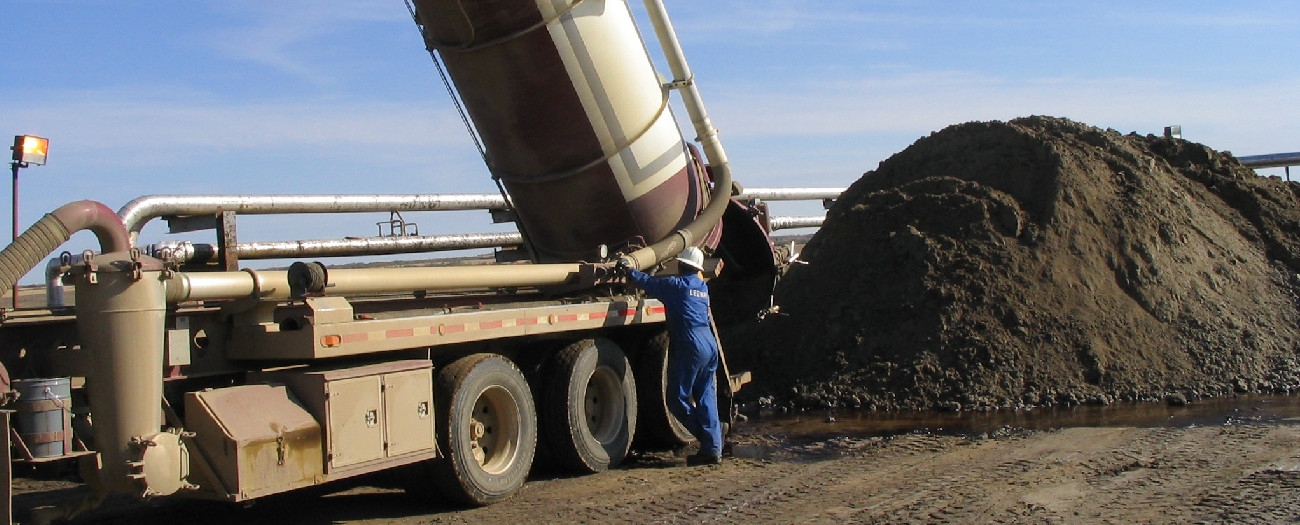When it comes to imported waste, one company’s trash is another company’s treasure
Alberta - September 04, 2018Imagine this: you’re walking down the street, tearing open your favourite candy bar. You eat the candy bar. What happens next? Chances are you’ll look for the nearest waste or recycling bin to toss the wrapper.
For energy companies that operate in Alberta, British Columbia, or Saskatchewan, sometimes the nearest bin—or in this case, oilfield waste processing facility—resides in a different province.
But why would a company in Saskatchewan, for example, choose to send its oilfield waste, generated from activities like drilling, across Alberta borders? And why would we take it?
“There are two main reasons: lower transportation costs, and more business,” explains Dalene Meier, environment technical specialist at the Alberta Energy Regulator (AER).
“A company near the edge of Saskatchewan is looking for the nearest facility to dispose of its waste, which may not always be in its own province. And a facility in Alberta that receives and disposes the waste wants to do business and make a profit.”
There are additional benefits to the arrangement: having fewer trucks travelling long distances translates into reduced emissions and increased safety for all drivers; it also gives companies an opportunity to develop more resources. Oilfield waste processing facilities in Alberta, for example, that accept waste from B.C. or Saskatchewan must be able to recover—and sell—any last traces of resources before disposing of the rest.
Breaking It Down
The phrase “imported waste” isn’t limited to energy development; all kinds of waste can be shipped over provincial borders for processing and disposal—even carwash detergent and soap waste.
In this case, “imported oilfield waste,” which often includes drilling mud and cuttings, is delivered by truck. Before the trek begins, there must be an agreement in place between the company delivering the waste and the company receiving it.
Companies sending oilfield waste across provincial borders must also specify what’s in it to ensure that anyone handling potentially hazardous materials is approved to accept it and to do so safely and responsibly.
When the waste reaches the facility, it is processed and squeezed of the remaining resources. From there, the waste is treated and recycled, or disposed of, in a landfill, disposal well, or cavern. Drilling waste is an exception: in some cases, it can be recycled or returned to the land.
And while there are over 150 active AER-regulated waste processing facilities in Alberta, Meier acknowledges that most trucks delivering waste into the province head to the nearest drop-off point.
“Understandably, facilities close to the provincial border receive the most out-of-province business—like around Grande Prairie or Lloydminster, for instance.”
Likewise, for companies producing resources in Alberta, sometimes the nearest oilfield waste processing facility is in B.C. or Saskatchewan.
Who Makes the Rules?
For over 22 years, Alberta has worked with governments and regulators in B.C. and Saskatchewan to ensure that imported waste is handled safely—regardless of where its journey begins and ends.
Here at home, the Government of Alberta and the AER work together to ensure that waste entering or leaving the province meets strict rules and requirements. If out-of-province waste doesn’t meet Alberta’s requirements, it will be turned away, and the neighbouring regulator (or other jurisdiction) will be notified.
The AER routinely inspects waste processing facilities in Alberta to ensure that they are capable of processing waste from other provinces and are disposing of it safely and responsibly. If rules are broken, the provincial government and the AER can suspend or shut down a facility.
For more information about waste management in Alberta’s energy sector, visit the AER’s website.
Kara MacInnes, Writer


